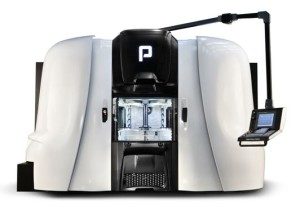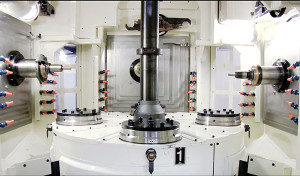
A historic crossover has taken place: by analysing YOUTUBE video data, I learned that the video that received the most views by INTERNET users is the MULTICENTER 2015, which is approaching 4,000 hits!!
Historically, Google Analytics data showed greater interest for high-production transfer machines.
So, this data also reveals a trend reversal.
This trend reversal, which comes directly from machine tool users, shows how said users are no longer looking for machines that produce as fast as possible, but instead for machines that are very flexible, quick to change and to adapt to the requests of the market.
Please also note that not only has there been a trend reversal of one product with respect to another, but, comparing the last 12 months with the previous 12-month period, the number of people who have visited the website and the Blog has increased by 22.6%
The web is getting increasingly used to looking for solutions to problems; whether it is simply to find a hotel, a store or a product, today one can also find the solution on how to produce today in a flexible manner.
The ten key works more commonly used when searching the web for this specific production problem are:
- FLEXIBLE PROCESSING
- QUICK PRODUCTION CHANGE
- FLEXIBLE MACHINES
- FLEXIBLE MACHINING CENTERS
- SMED MACHINE TOOLS
- LEAN MANUFACTURING or PRODUCING WHAT YOU SELL
- PRODUCTION OF MEDIUM-SIZE LOTS
- FLEXIBLE PROCESSING CELLS
- LEAN PRODUCTION
If you look closely at the list, you will notice that none of these words indicate an increase in production or volume.
Somehow, they all refer to a problem: the search for flexibility imposed by changing times.
The large volumes of identical products are long gone.
Today, winning the challenge of producing small-medium lots to order is increasingly important: companies need to become flexible, at the same time without losing track of the need to provide the end customer with quick service.
Many companies try to meet these needs by rushing headlong into the purchase of machining centers, which are indeed flexible, but also slower!
So, the next step, or better yet, the next error is to increase the stock on hand so as to quickly meet any customer requests.
INCREASING YOUR STOCK ON HAND SO THAT YOU CAN QUICKLY SATISFY YOUR CUSTOMER IS A BIG MISTAKE!
Apparently, increasing your stock is done for a good reason, which is to quickly meet the end customer’s requests and to avoid losing the order; however, the “damage” can have repercussions on the company structure.
First of all, year-end inventories are taxed; consequently, in and of itself, having a high inventory is not one of the most advantageous situations from a fiscal standpoint.
The more stock I have, the more expensive it is to take inventory, and the more I will spend in terms of space, cleaning and tidying up.
Basically, the larger the inventory, the more problems there are.
Having lots of stock on hand also entails the risk deriving from possible errors in sales forecasts which, should they turn out to be wrong, cause inventory increases due to unsold material.
Or, even worse, if the final customer asks you to make changes to the piece and you have already produced it, at your own risk and danger, that’s a real problem.
I have customers that have more products than they need.
Now, they have innovations they would like to include in their product, but first “the old inventory needs to be sold first”.
This is easier said than done, so, the consequence is delaying the introduction of the new product, thus slowing down the company’s growth.
Another situation that a customer found themselves in concerned changes in the regulations that govern their sector.
This customer had leftover stock, and in the end it cost him less to throw it all away than to modify the existing product.
A LARGE INVENTORY IS ONLY A BENEFIT FOR THE INTERNAL REVENUE SERVICE…
With the introduction of LEAN MANUFACTURING, a concept developed in the automotive sector, specifically by the Toyota company, the work method of manufacturing companies was turned upside down.
Today, companies aim to reduce stock as much as possible and to produce only what they sell.
This modus operandi results in considerable advantages, but also in practical problems at the production level.
The new production laws according to this method are: be flexible (typical of the machining center) and produce quickly so that you don’t have to rely on the stock; the machining center fails in this aspect…
THIS SYSTEM AUTOMATICALLY EXCLUDES COMPETITION FROM DEVELOPING COUNTRIES, WHICH ARE NOT ABLE TO OPERATE IN THIS FASHION
However, if this is implemented in a typical manufacturing company, it is likely to place a great deal of stress on the organisation and on interpersonal relationships, generating frustration and loss of motivation.
Because you may even change how you do things, but if the instruments available are outdated and inadequate, the situation can only get worse.
AND THAT IS THE REASON WHY, IN THE LAST 20 MONTHS, THE MULTICENTER HAS SURPASSED THE TRANSFER MACHINE.
The MULTICENTER is the right machine to meet these new requirements since it is based on a TRANSFER technology: the 4-station pallet rotates like a TRANSFER, so it is fast enough to produce on time.
Instead of simple transfer units, 3 independent MACHINING CENTERS were used, with tool change and tool rotation B axis.
This is to guarantee flexibility.
THE MULTICENTER ALLOWS YOU TO REDUCE YOUR FINISHED PRODUCTS STOCK HOW?
DUE TO TOOLING FLEXIBILITY AND PRODUCTION SPEED

Below is a summary of the strengths of this machine, in line with the new requests resulting from Google searches:
- VERY FLEXIBLE, IT CAN BE ADAPTED TO ALL KINDS OF PIECES TO BE PROCESSED
- SUPER FAST TOOLING: PART TO PART IN 15/20 MIN.
- FAST PRODUCTION: 3 SPINDLES ALWAYS IN OPERATION
- LOWER TOOL COSTS
- LOWEST INVESTMENT COST IN ITS CATEGORY
This machine can be metaphorically connected to the sales office telephone in order to produce QUICKLY, with changeover times of 15/20 minutes.
A dream that will make the resolve the disputes between your managers.
The Sales Office and the Production Department do not usually see eye to eye, because it is here that the conflict takes place or, better yet, in technical terms, the meeting of the market requests and of the company’s internal organisation, made up of people and machines.
MARKET ON ONE SIDE, PEOPLE AND MACHINES WITHIN YOUR COMPANY ON THE OTHER
These are the main variables, and as one variable changes, the others also have to change in order to keep the company balanced.
If this does not happen, conflicts will consequently arise when in fact meetings should be held in order to understand the road to be taken together.
For more information on the Method “Flexible Production”, click on the following link:
CLICK HERE:
http://www.flexibleproduction.com/landing/the-first-book-on-flexible-production/
Maurizio Porta
Expert in Flexible Production

 Ita
Ita Deu
Deu
